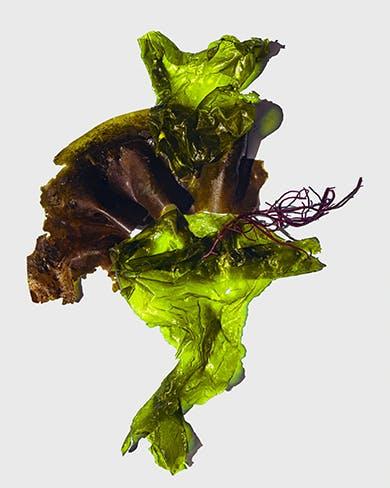From Marginal to Mainstream at The Nursery
We are so proud to have had a role to play in Helen Edwards brilliant book From Marginal to Mainstream. There are some weird and wonderful behaviours covered in the book [the full list is below] but we thought you may be interested in how we got involved in the first place.
Let’s start by going back a couple of years
As researchers we’re talking to all sorts of people from all walks of life, but a lot of these interesting people aren’t seen in the mainstream media. As part of our Thought Leadership work, we did a mix of desk, qualitative and quantitative research to find out more about the Hidden World of Sub-cultures
We define Sub-cultures as groups existing within the mainstream, but their beliefs and behaviour are often at a variance in some way.
Sub-cultures captured our attention because they are interesting, we couldn’t help but be drawn towards these groups of people who go about their lives differently from the mainstream. Perhaps the more surprising thing we learned is that they are as relevant as they are interesting. We saw the example of Greggs bringing out their vegan sausage roll just as the plant based market started to boom, and Greggs staff got a massive £7 million bonus shared between them as a result of the success of the product. It got us wondering what else might be on the cusp of moving into the mainstream, and where opportunities could be for other brands.
At the same time, unbeknownst to us, Helen was delving into the world of marginal behaviours. We defined a marginal behaviour as a behaviour which stands well apart from the repertoire of norms within the mainstream, sometimes a way of life, sometimes a more isolated quirk. From our research, Sub-cultures had more of a community feel, and often sat happily alongside the mainstream and (most of the time) were viewed quite warmly by those not involved.
We carried out 3 nationally representative surveys – 2 in the UK and 1 in the US, testing a total of 21 marginal behaviours and 3 mainstream behaviours to be used as a benchmark.
We asked about knowledge of the behaviours and attitudes towards them, willingness to try as well as personality characteristics and demographics.
Our analysis lead us to 4 hypotheses
For a behaviour to move into the mainstream it relies on enough people having knowledge of it to allow more people the opportunity to try the behaviour. This alone however isn’t enough for it to become mainstream.
Behaviours which elicit strong negative emotions, such as disgust, are less likely to be something people are willing to try and so create a strong barrier to becoming mainstream.
Those that are impractical are also less likely to be a behaviour people are willing to try but to a lesser extent than the above. Meaning behaviours that are impractical but don’t create negative emotions have a weaker barrier to becoming mainstream.
Risk takers influence the risk averse. When a higher proportion of “risk-takers” are willing to try a behaviour, the behaviour can be tipped into the mainstream and the risk averse will follow.
Enabling us to create a composite score for each behaviour, based on things like level of disgust and practicality, and rank them from most to least likely to have potential to become mainstream.
The full list of marginal behaviours we looked at
Ayahuasca
What: A powerful psychoactive drug harvested in the jungles of South America and administered at retreats by shamans
Why: To search for enlightenment and the meaning of life – participants are evangelical about its life-changing properties
Free birthing
What: Giving birth without any medical intervention.
Why: To deliver new human life in the most natural way possible, whether at home or even outdoors.
Home Burial
What: Burials in gardens, back yards and on private land.
Why: To keep your loved ones close, and lay them to rest in a place they loved.
Raising children gender-neutral
What: Not categorising children by gender in their infancy, giving neutral names, pronouns, clothes and toys
Why: To avoid defining or even limiting their prospects by pigeonholing children at an early age
Biohacking
What: Embedding tech such as microchips into human bodies to create cyborg capabilities
Why: To improve able-bodied and disabled lives with easy access to tech, security, speed

Living without money
What: Avoiding the use of cash or money
Why: Sidestepping problems related to having too much or too little money by minimising consumption, bartering or working for necessities and dramatically simplifying lifestyle.
Micro dosing
What: Taking daily minuscule doses of psychoactive drugs.
Why: At very low intake levels, psychoactive drugs like LSD or psilocybin (magic mushrooms) boost mood and sharpen senses without making the user high.
Naturism
What: Going without clothes when weather (and public decency) allows
Why: To enjoy the liberating back-to-nature feeling, and boost mental health
Voluntary Celibacy
What: Purposely choosing not to have any sexual relationships
Why: to avoid poor decisions and their consequences, to develop meaningful relationships and boost own self awareness
Living off the Sea
What: Harvesting and eating the ocean plant kelp, which grows in coastal waters
Why: Sustainable and tasty source of non-meat protein, with less impact on the environment than any other superfood

Extreme frugalism
What: Spending the bare minimum on living expenses and saving up to 40% of income
Why: To build up cash reserves while working in order to retire young
Neo-luddites
What: People who reject technology and live without wifi, mobile phones or computers
Why: To find refuge from the overwhelming barrage of communications from the outside world
Neo-tribalism
What: Singles, couples and families living communally, often with a guiding principle in common
Why: Wanting to live a simpler, more fulfilling life with like-minded people
Wicca
What: Modern day witchcraft rooted in paganism involving potions, crystal meditation and a spiritual connection with elemental forces
Why: A sense of control and empowerment based on rituals inspired by nature, the moon and the sun
Insect protein
What: Eating protein derived from insects instead of animal meat.
Why: Sustainable, cheap and environmentally friendly as well as delivering more protein and less fat.

New nomads
What: Living permanently in motor homes.
Why: A cheaper way to live for those nearing retirement age without pension arrangements.
Polyamory
What: Committed emotional and/or sexual relationships with more than one person.
Why: Polyamorists feel able to love more than one person deeply, so live openly in non-monogamous relationships.
Urophagia
What: The ancient practice of drinking your own urine.
Why: Believed to support a healthy body and immune system.
Polyphasic sleeping
What: Sleeping in short bursts throughout each 24 hours
Why: Mimicking animal sleep patterns helps some people who struggle with night-time sleep to function better and more productively.
Quantified Self
What: Daily measuring and recording of personal metrics
Why: Self-improvement by intense focus on oneself; by visualising their lifestyle in numbers and on graphs, users highlight problems and can be encouraged by small improvements.